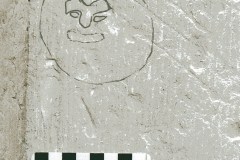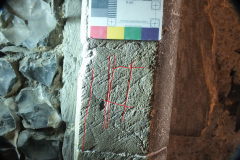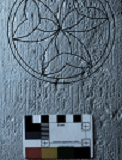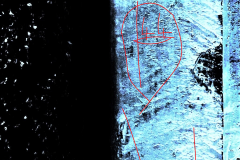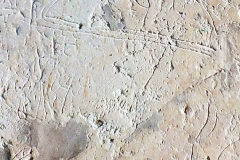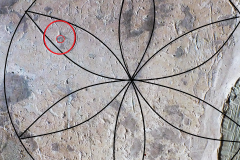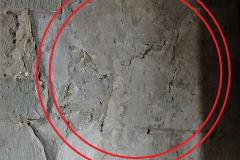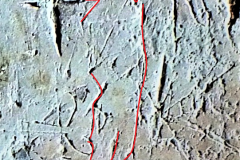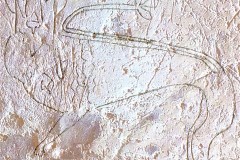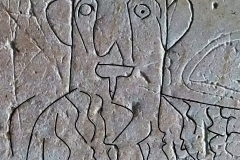St Mary, Upchurch & St Margaret, Lower Halstow
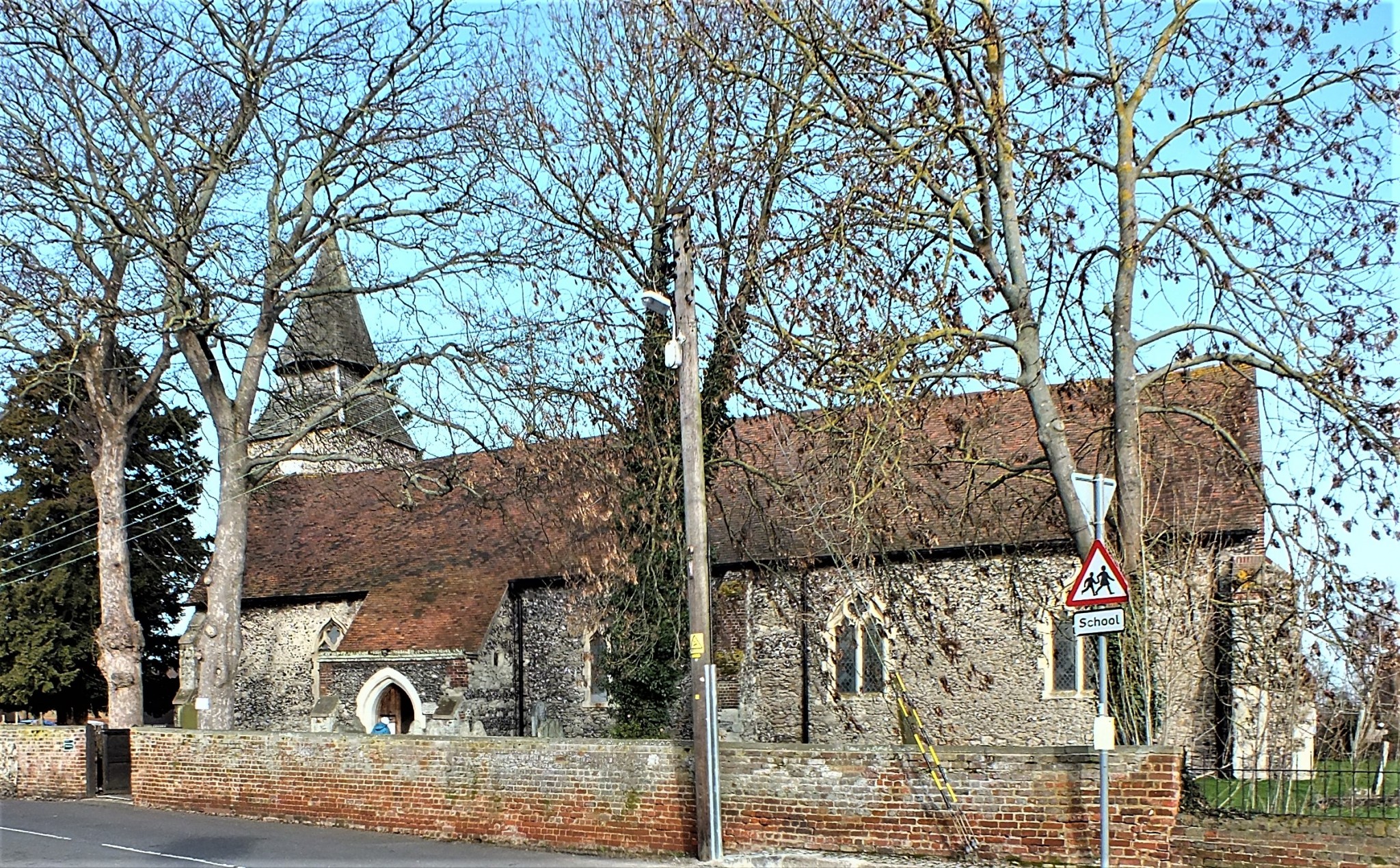
The Kent villages of Upchurch and Lower Halstow lay roughly five and six miles east of Gillingham respectively and north of the main A2 road. Lower Halstow is possibly slightly the smaller of the villages, with the little church of St Margaret of Antioch, tucked away on a creek of the River Medway.
Upchurch on the other hand is strung out and is almost in two halves. The older and larger section is dominated by the larger church of St Mary the Virgin, which although “restored” in 1875, still retains some of the medieval fabric. The tower, which was restored in the 15th century, and is unusual in that it has what is known as a shingled “Candle Snuffer” roof (See photo). The chancel, dated as c. 1300, while the nave and East Chapel are 14th century. St Margaret is older, having its origins in the 8th century, the 12th century aisles and 13th century tower remain. The church was though remodelled about the 14th and 15th centuries, with more restoration work being conducted in the early 20th.
The graffiti of these churches were surveyed in the second half of 2014 and were among the first I surveyed being two of the four medieval churches within about 5 miles of his home. Although, these churches are near each other the graffiti found was quite different.
In St Mary’s, although graffiti was found, most of it is poor, such as the number of very rough groups of lines which are possible tallies and are recorded as apotropaic marks. There is one compass drawn trefoil which is very good, albeit rather feint and weathered. Several items were found on the timbers of the tower, these were mainly carpenter’s marks, although one tally was noted. Two reused gravestones were found in the Tower, a footstone is used as the threshold of the entrance to the Clock Room and the sill of the window in that room is a reused headstone.
There are a three stones with marks which seem to be script on a pillar in the chancel. These cover quite a large area, but are illegible. Three crosses were found, these ranged from a large fairly rough St Andrew’s cross in the tower to rather neat small crosses in the nave. It seems possible, that because of the hard stone in constructing much of the church, graffiti may have merely cut through the paint, which would have decorated the church, leaving little if any marks on the stone.
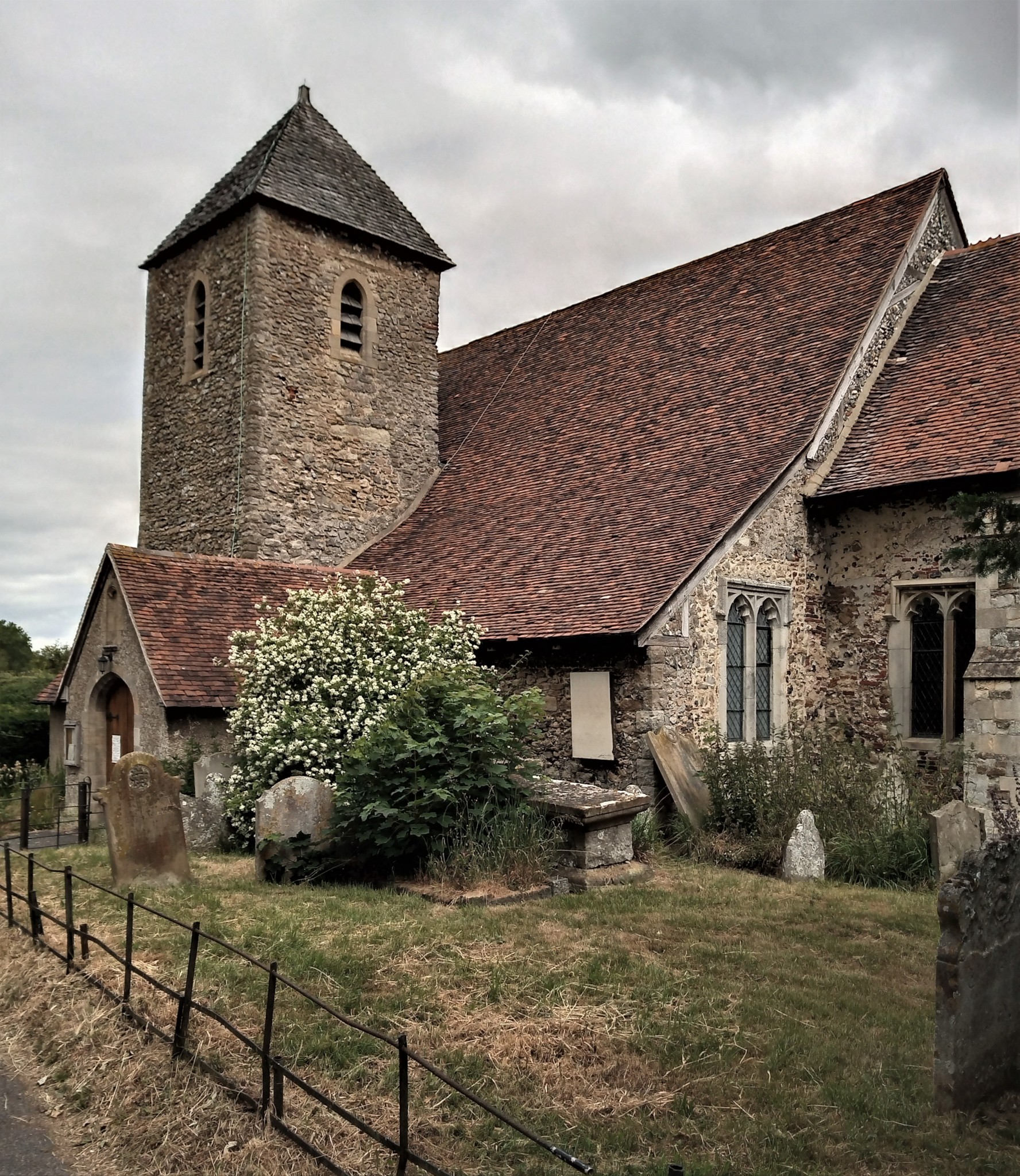
Although only about a mile apart in a straight line, the graffiti at St Margaret’s is generally better than St Mary’s both in terms of quality and apart from the script in interest. However, much of this is on plaster, often over other and through other graffiti, while in some areas the plaster is in poor condition and/or has been repaired. Most of the collection is on the central pillar of the south aisle, this includes a Manticore, the only one the author has seen, a human figure, an exceptionally large ‘daisy wheel’ 50cm in diameter and much more. However, this graffiti may well span many years and they often cut through each other, for example the pair of compass drawn parallel circles. Although marginally less graffiti is recorded here, this is perhaps because of the poor condition of the plaster on which it is inscribed. Script was recorded here but again, like the other inscriptions seen, much is no longer visible because of the condition of the plaster and many coats of lime wash. The largest compass drawn circle seen by the author was found here, on the south aisle east pillar. The outer of these two parallel circles measured 60cm in diameter, as accurately as it could be measured given the faintness of the inscription and the condition of the plaster.
It has been necessary to enhance many of the photographs, this is because largely because the graffiti itself is faint or badly weathered. Some of these enhanced illustrations look a little odd, because of the angle the picture was taken at has distorted the shape. The picture of the large parallel circles at St Margaret’s is perhaps the worst example of this. However, I’ve drawn over what is there as closely as I can, the idea being to show what was there but close inspection may well show these anomalies.
Report by Alan Anstee.
St Mary The Virgin
3 Horsham Lane
Upchurch Sittingbourne
Kent
ME9 7AL
St Margaret of Antioch
Lower Halstow
Sittingbourne
ME0 7PN
Search terms: reused gravestones, footstone, graffiti, tally, circles (hand drawn), circles (compass drawn),, circles (interlocking) apotropaic, lines (converging), tally marls, mason’s marks, VV, marian mark, carpenter’s mark, cross, St Andrew’s cross, date, 1706, letters, ME, script, human face, manticore, rectangle, trefoil, CB, daisy wheel (compass drawn), ladder mark, circles (concentric), arrowhead, shields (painted), text, script

